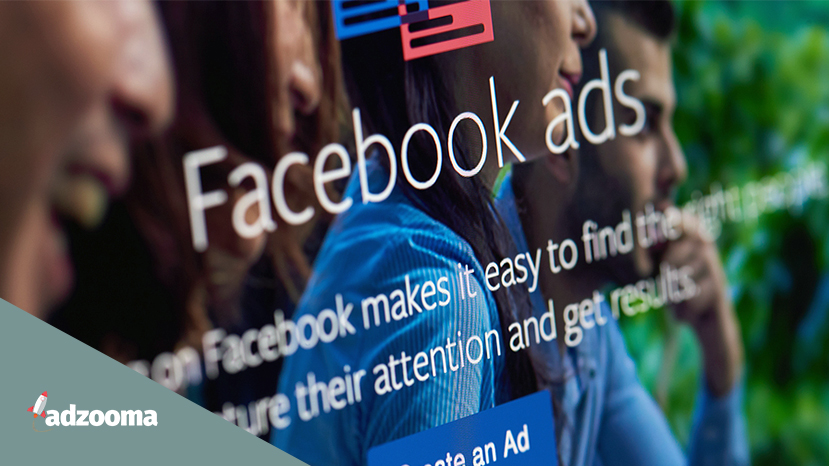As Facebook Ads is one of the best places to find qualified leads, it is vital to write ads that convert well.
So let’s look at 10 ways to do it.
1. Match high-quality visuals with stellar copy
Visual content is crucial to the almighty Facebook algorithm and more likely to get shares. But visuals working with high-quality copywriting is the golden combination. You should tell your viewers what they are getting in a few words which subtly guides them to your website via the offer something that fulfils a need.
Make sure your images are as high res as possible and that you use a variety of tricks including:
- Address users directly
- Use emotional triggers
- Showcase your USP
For more tips that’ll help your ads convert, read our PPC copywriting guide.
2. Target the right audience
Any Facebook Ads campaign depends on its ability to target various types of customers, whether this is potential or repeat customers, or just your current crop of customers. And don’t forget to use a Facebook Pixel to give you an insight into who is currently visiting your website, but what demographics they fall into, such as age group.
Examples of demographic data include:
- Location
- Age
- Interests
- Language
- Income
Read our article on how to improve PPC performance with audience targeting.
3. Use powerful CTAs
CTA’s (calls to action) are a major part of the advertising landscape. More than a button that implores readers “learn more” or “visit our shop now”, a CTA should create a strong sense of urgency that fulfils a customer’s need.
But as well as that, an effective CTA needs to be easy to understand, use plain language, and have the right balance between under and overselling. If you need more help, we have a guide to do’s and dont’s of CTAs you should read.
4. Send visitors to the right landing page
The cardinal sin of directing Facebook traffic is that the target page should be the homepage. That’s usually the wrong page to target (unless you’re running an awareness campaign). You should direct traffic to a landing page that matches the tone and goals you have presented in the ad.
If your CTA was for a customer to purchase a product, it should go to the product page or product menu, rather than a generic landing page. But you should make sure you create a landing page that’s sure to convert.
5. Research customer needs
By undertaking a competitive analysis of your customers, you begin to understand them better. You can do market research to determine what to include in specific Facebook ads.
Or if you are retargeting based on a section of your site or a particular landing page, you need to consider what other retargeting information should go in your ad copy.
When analysing customers, it is also worth considering the “voice” of the customer, which you can do by listening to calls, looking at online reviews or social media comments so you can understand their tone of voice and language used and incorporate this into your ad copy.

6. Use SEO and PPC keyword data
Using SEO (search engine optimisation) in conjunction with PPC keyword data gives you reliable data on your customers.
Instead of guessing, you can find hundreds of keywords that people are using, as well as data like search volume, competition level, and the estimated PPC costs for each keyword.
To get started, you can use a PPC keyword tool such as SEMRush and Mangools to find a list of PPC keywords. Entering a topic or URL provides you with a list of related keywords sorted by popularity.
But you can also personalise your results based on your industry and country. Once you have discovered the suitable keywords, you can group them by intent:
- Branded keywords – keywords that include your brand name and provide excellent click-through rate (CTR) and conversion rates
- Commercial keywords – terms used by prospects who are most likely to buy
- Informational keywords – these keywords usually involve how-to guides and information more akin to content marketing than lead generation
There are also groups such as long-tail keywords and competitive keywords (so you get your brand and offerings to people who are searching for your competitors’ services).
7. Set your goals
It is vital that you choose your Facebook Ads marketing objective. You can choose from 3 different objectives:
Awareness: this enables you to create either brand awareness ads or reach ads to attract potential customers and begin generating leads, which is part of the top of the funnel (TOFU) approach to marketing.
Consideration: to drive engagement, you need to educate your target audience about your brand and products. Facebook lets you do this through various methods, such as information on traffic, comments, likes, and shares, and video views.
Conversion: this focuses on getting people to take action by choosing a goal like conversions, sales, or store visits.
8. Try multiple Facebook Ad formats
The correct format for your message is just as important as how you present it. Each Facebook Ads format has its benefits and drawbacks, so it is crucial you address what each one does for you.
The 8 ad formats are:
- Photo ads
- Video ads
- Story ads
- Messenger ads
- Carousel ads
- Slideshow ads
- Collection ads
- Playable ads
They also come with their own specifications and recommendations. For more information, read Facebook’s dedicated guide to each format.
9. Always split test
The art of fine-tuning your ad by split testing allows you to compare different versions and test what works and what doesn’t. You can do this in three ways:
Split testing can also save your Facebook marketing budget. By knowing what the best ads are, you know when to publish and how much to spend.
10. Experiment!
Test out your ads. Certain aspects may work, whereas others may not. When learning how to write Facebook Ads, the notion of experimentation is underrated. Your business is unique, or you need to acquire a sense of uniqueness. Therefore, taking the opportunity to try things out will give you a better chance of learning where you fall.
Conclusion
Facebook Ads is great way to acquire leads for your business cheaply, retarget your company to past customers to keep them coming back, and can be part of an effective campaign. But it is important to remember that the strategy you use will make all the difference in converting those leads.
To create an effective Facebook Ads campaign, don’t just focus on selling directly, but use social media to direct your ad to an opt-in landing page. This, combined with a free incentive to sign up, helps you sell your products and services further.




